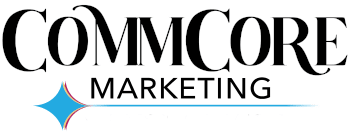What is content marketing?
C ontent marketing is a strategic marketing approach focused on creating and distributing valuable, relevant, and consistent content to attract and retain a clearly defined audience — and, ultimately, to drive profitable customer action (Content Marketing Institute).
ontent marketing is a strategic marketing approach focused on creating and distributing valuable, relevant, and consistent content to attract and retain a clearly defined audience — and, ultimately, to drive profitable customer action (Content Marketing Institute).
Content can mean:
- Blog articles
- Web pages
- Landing pages
- Books
- Photos
- Infographics
- Videos
- Podcasts
- Social media posts
- Ads
- Flyers and other print material
Content in any of the above formats can provide value to an audience. And if it is both relevant and consistent enough, it will drive profitable action from your audience.
Content Marketing Actually Offers Something Your Customers Want
Traditional marketing is becoming far less effective while content marketing is on the rise. Why?
Because content marketing provides what traditional marketing doesn’t: value and relevance.
When you understand how the buying cycle works, you can start to see where content marketing succeeds and traditional marketing falls short:
- Awareness: The customer becomes aware there is a solution to a need they may have
- Research: Upon becoming aware of a solution, the customer will educate themselves on offerings of solution
- Consideration: After deciding they have obtained enough information about the solution, the customer will compare and evaluate the tangible solution offered by different vendors
- Purchase: Once the customer has selected a vendor to fulfill their need, they will move forward with the transaction
Traditional marketing is good for the last two steps— offering an option, a sales pitch, and a call to action for how to buy the product or service.
Traditional marketing is also known as push marketing which is all about pushing the ad message out in front of anybody.
Push Marketing vs. Pull Marketing
In push marketing, there’s no room for the first two steps of the buying cycle.
But with content marketing, the first two steps are the most important. The aim is to raise awareness and then educate an audience on a solution they may not have previously considered.
By tapping into the first two steps of the buying cycle, content marketing does a great service to consumers by offering them honest, valuable, and relevant information. There are no strings attached. There is no luring and no shady sales tactics in content marketing. It is honest and upfront.
This is why this type of marketing is otherwise known as pull marketing. Because it is designed to attract customers through search engine optimization, which allows the consumer to find brands through relevant searches.
The consumer is pulling marketing to themselves that they find relevant and of value.
When the first two steps of the buying cycle are accomplished by you, the marketer, you have established ethos with the consumer. With that trust, you can establish customer loyalty far more effectively than any form of traditional marketing can.
So How Do You Get Started?
First, you need a plan. Like with any marketing, it’s not wise to just throw money at something and trust that it will work simply because someone told you it would.
Ask yourself these questions:
- What am I trying to achieve with content marketing?
- What media make the most sense for my target audience?
- Which social platforms do my target audience spend the most time on?
- What kind of content schedule can I commit to?
- What kind of content should I create?
When you have answers to these questions, you have the skeleton of a marketing plan in place, which is all you really need. You shouldn’t wait and dither around until the cows come home. Having some content out there is better than having none.
So then, it comes down to execution.
You have a few options when it comes to executing your content marketing.
- Do it yourself
- Assign the role to someone in-house
- Hire a professional content marketer to do it for you
Pros & Cons of DIY
Pros:
- Saves you money
- You have full control of your brand voice
- You have full control over your content distribution
Cons:
- Huge time commitment
- Takes a lot of energy away from your business
- You have to stay up to date on the best content marketing practice like SEO and the best times to post
Pros & Cons of Doing it In-House
Pros:
- Might save you money
- Takes the job off your plate so you can focus on building your business
- Might be more reliable than doing it yourself
Cons:
- Takes away some control of your brand voice
- Your in-house staff person may or may not be a good writer, and they may or may not have the aforementioned skills required to be a good content marketer
Pros & Cons of Hiring a Professional
Pros:
- You get high-quality professional work
- You get someone who’s highly considerate of your brand voice and your target audience
- You work with someone who understands the context of a larger content strategy with your goals in mind
Cons:
- You relinquish a lot of control of your brand voice
- A good writer might not quite fit your budget if you’re not fully invested in content marketing
Some freelancers will charge you per hour, some will charge you per word,
- but many professionals with marketing experience will charge per project
Interested in learning more? Email us at LauraD@CommCoreMarketing.com or call 314.308.0799.


0 Comments